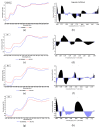Use of Near-Infrared Spectroscopy to Discriminate DFD Beef and Predict Meat Quality Traits in Autochthonous Breeds
- PMID: 37431020
- PMCID: PMC9601313
- DOI: 10.3390/foods11203274
Use of Near-Infrared Spectroscopy to Discriminate DFD Beef and Predict Meat Quality Traits in Autochthonous Breeds
Abstract
The potential of near-infrared reflectance spectroscopy (NIRS) to discriminate Normal and DFD (dark, firm, and dry) beef and predict quality traits in 129 Longissimus thoracis (LT) samples from three Spanish purebreeds, Asturiana de los Valles (AV; n = 50), Rubia Gallega (RG; n = 37), and Retinta (RE; n = 42) was assessed. The results obtained by partial least squares-discriminant analysis (PLS-DA) indicated successful discrimination between Normal and DFD samples of meat from AV and RG (with sensitivity over 93% for both and specificity of 100 and 72%, respectively), while RE and total sample sets showed poorer results. Soft independent modelling of class analogies (SIMCA) showed 100% sensitivity for DFD meat in total, AV, RG, and RE sample sets and over 90% specificity for AV, RG, and RE, while it was very low for the total sample set (19.8%). NIRS quantitative models by partial least squares regression (PLSR) allowed reliable prediction of color parameters (CIE L*, a*, b*, hue, chroma). Results from qualitative and quantitative assays are interesting in terms of early decision making in the meat production chain to avoid economic losses and food waste.
Keywords: Asturiana de los Valles; DFD classification; NIRS; Retinta; Rubia Gallega; meat quality.
Conflict of interest statement
The authors declare no conflict of interest.
Figures



References
Grants and funding
LinkOut - more resources
Full Text Sources

